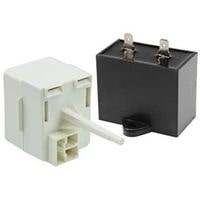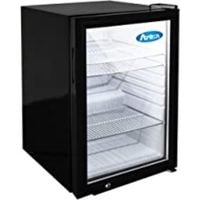Admiral Refrigerator Not Cooling. When your refrigerator breaks down, you need to address the issue immediately! Perishable items in your fridge will spoil if you don’t keep the temperature at a consistent level.
Some problems with your fridge can be solved with some simple maintenance, but others will require professional help, so to help you out we’ve compiled a list of common reasons why your fridge isn’t cooling properly.
By figuring out exactly why this is happening and how to resolve the issue properly, you’ll be able to diagnose and deal with the problem better.
Admiral Refrigerator Not Cooling
Admiral Refrigerator not cooling If the coils are excessively dirty, the refrigerator will not have enough contact with the air to cool down. Check the condenser coils to ensure that they are clean and then clean or replace them if necessary.
The following are some problems that may occur with the Admiral refrigerator when it does not cool.
Defective Main Control Board
The main control board is almost never the cause when there’s a problem with the dishwasher. Usually, it’s one of the other components being defective so test them first.
If none of the others are to blame, then you may need to replace the main control board. But make sure you’ve tested all other components as well.
Faulty Compressor
The compressor is what keeps the refrigerator cool. This includes compressing refrigerant and circulating it through the evaporator and condenser coils.
If this stops working, the fridge will stop cooling. A compressor failure is rare.
If you’re troubleshooting a major appliance like your refrigerator, check all components before replacing them.
Test whether your fridge’s electrical pins are short-circuited to see if the compressor has been damaged or broken.
If they are short-circuited, then likely faulty wiring has caused an open circuit which makes your fridge’s compressor stop functioning altogether.
In this case, a professional must remedy the situation in order to have returned functionality and convenience back in working order.
Thermistor Malfunction
A Thermistor monitors the temperature and sends it to the control board. The control board regulates power to the compressor and evaporator fan based on this information.
If there’s a problem with the thermistor, neither of these devices will know what’s going on. Then your refrigerator won’t be cold enough.
Put a multimeter on your Thermistor to check for voltage changes with temperature changes or continuity. Replace it if either of these isn’t present in order to restore proper refrigerator operation!
Control Board For Temperature
The temperature control board provides voltage to the cooling system. If it’s defective, the fans and compressor may not run properly. But don’t worry this is a rare occurrence.
When diagnosing the problem, first test all of the other components that are more commonly defective on your air conditioner.
These include, for example, a faulty fan motor or leakage in the cooling system that might prevent either of those parts from functioning properly.
If none of these parts are defective, you should consider replacing the temperature control board in your mini-split system.
Problem With Start Capacitor
The start capacitor acts as a boost of energy to help the compressor start-up.
If the start capacitor isn’t working, then there is no power for the compressor to run on.
As a result, the refrigerator will not cool, and your food can spoil before it’s time. With a multimeter, test if the start capacitor is working correctly. If it is not, then replace the faulty part with a new one.
Thermostat With Temperature Control
The temperature control thermostat delivers voltage to the electrical components of your heating and cooling system. If it’s defective, your entire HVAC unit will not work properly or not at all.
To test the thermostat for electricity, flick it from its lowest setting to the highest and try to hear a click. Move from switch to switch as long as you can hear a click.
The first switch that doesn’t have a click may have problems with continuity. Use a multimeter only if you can’t find any continuity on your own.
Issue With Start Relay
In order to start the compressor, the start relay works with the start winding. In case of a defective start relay, the refrigerator may run intermittently or may not run at all. As a result, your refrigerator won’t stay cold enough.
To determine if the start relay is bad, you can use a multimeter to test it for continuity between the Start and Run socket pairs. Start relays that do not have continuity between these sockets should be replaced.
If you smell burnt components, your compressor has been damaged in some way, which may result in irreparable damage. Make sure you replace those compromised components as soon as possible to avoid further damage.
Fan Motor For Condenser
The condenser fan motor draws air through the condenser coils and over to the compressor. If a problem is present with the condenser fan motor, then the refrigerator won’t be able to cool properly.
First check if there are any obstructions within the fan blade, next try to see if it spins freely by hand. If that doesn’t work, test for continuity using a multimeter. If there isn’t mass continuity between the wires in this part, then it must be replaced.
Related Guides
